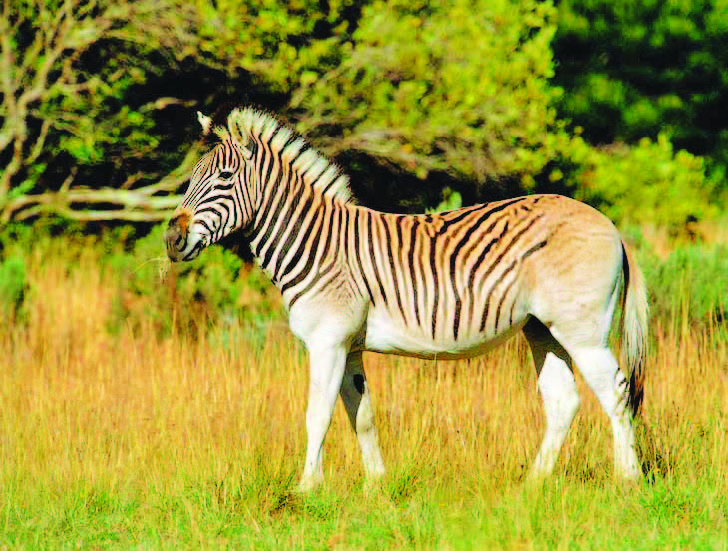In South Africa, zebra-like Quaggas graze nonchalantly, rung by milling herds of antelope and wildebeest. A typical African scene… except that Quaggas have been extinct since the 1880s.
Readers, Jurassic Park can be real. Selective breeding has produced creatures which look surprisingly close to extinct animals. Read on as we tackle this controversial but vastly interesting topic.
Not quite extinct
The Quagga (pronounced Kwa-ha) is a unique subspecies of the Plains Zebra and looks pretty much like what you’d get if you crossed one with a horse. Their stripes cover only their heads and shoulders; the rest of the body is tawny white. According to Arkive, they most likely formed harems comprised of several females and led by a male.

Before Europeans invaded and colonized Africa in the early 1800s, vast herds of Quagga grazed. According to the Quagga Project of Stellenbosch University, Europeans saw the animals as direct competitors to their sheep, goats, and other livestock. In less than a century, they hunted them to extinction — relishing their meat and their unique pelts. The last Quagga died in Amsterdam Zoo in 1883 and the animal entered history books.
The Science of Back Breeding
In the 1920s, German scientists Heinz and Lutz Heck attempted to revive the ancestor of all domestic cattle, the Aurochs (its singular and plural names are the same). According to a 2017 article by Lorraine Boissoneault for the Smithsonian Magazine, the last Aurochs died in 1627 in Poland, but as Germany geared up for the Second World War, it poured funds to bring the breed back as an icon of Teutonic pride.
Today, over 2,000 Heck cattle have been reintroduced across Europe. Though smaller than the original Aurochs, Heck cattle look pretty close to their ancestors. Today, new lines are being developed to create bigger animals.

The story of the Tarpan is similar. One of the world’s last wild horses, the Tarpan was pushed to extinction in 1909 but was back-bred again by the Heck brothers, resulting in the Heck horse, which has been re-introduced in Europe.
As more scientists unlock the science of back breeding, additional projects are underway for animals as small as the Passenger Pigeon (once among Earth’s most common birds, but was hunted to extinction by 1914) and even the legendary Wooly Mammoth. Scientists agree that these ‘back-bred’ animals only look outwardly similar to the extinct animals they were modeled after as behavior cannot be passed on via selective breeding. However, this does seem like a way to atone for the many species which fell by the wayside because of humanity’s greed.
In less than a century, we might again see giants such as Wooly Mammoths, Wooly Rhinoceroses, and Giant Sloths.
This appeared in Animal Scene magazine’s December 2018 issue.





